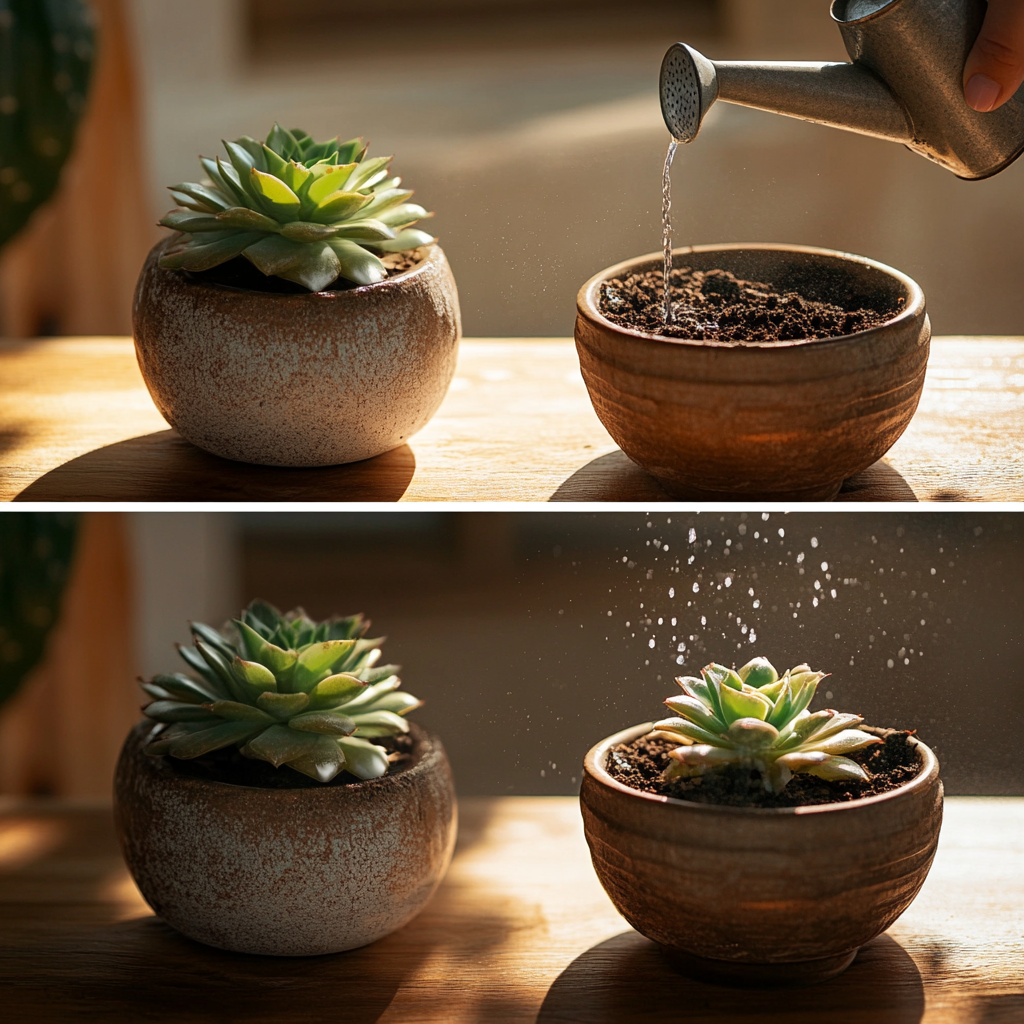Most people like succulents in their indoor areas because of their distinctive shapes and colors. Succulents for Indoor Gardens are adding beauty to our rooms with their eye-catching appearance, while also cleaning the air and contributing to comfortable atmospheric conditions. Many people develop their indoor gardens with succulents, which are among the most popular flora, making them perfect for both advanced and beginner gardeners. This article will help you understand why succulents are an excellent addition to any indoor setting and how Succulents for Indoor Gardens can help you create a thriving indoor oasis with easy-care plants.
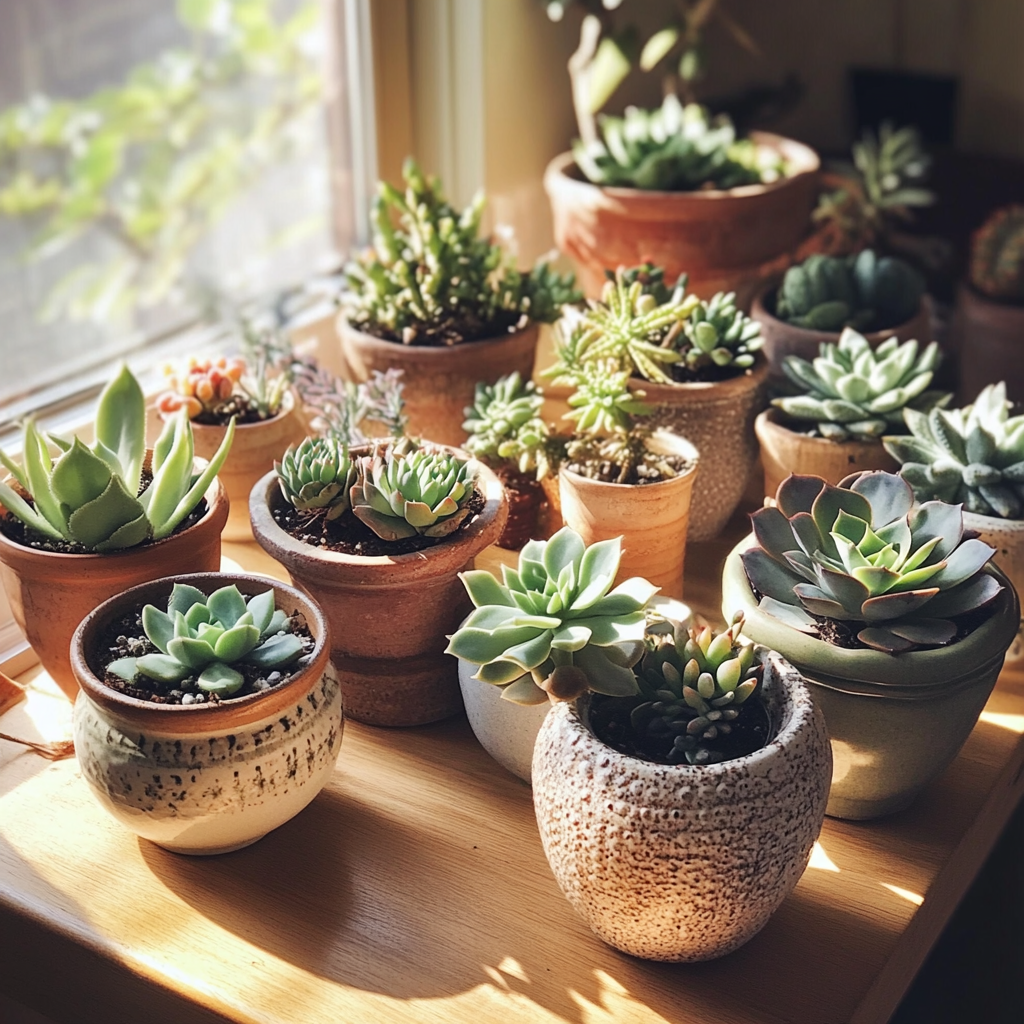
Why Succulents?
Low Maintenance Requirements
The biggest reason for their rise in popularity would be because they need to be very low in their maintenance. Most of the houseplants require regular watering and very specific care. Succulents have very thick leaves that allow them to store water. This helps them to survive more days without watering.
Indoor Versatility
Succulent plants are perfect for a small apartment or a big one. Succulents will fit into the style, whether minimalistic or this may be placed on the topmost shelves of your bookcase, on window sills, or even on the dining table to become the centerpiece.
Variety in Colors, Shapes, and Sizes
They range in color, shape, and size, from the rosette formation of Echeveria to the unusual textures of Haworthia and the growing height of Aloe Vera; each has its own unique charm that it adds to your indoor garden. This diverse range allows the creation of beautiful-looking arrangements that may help lighten up your room.
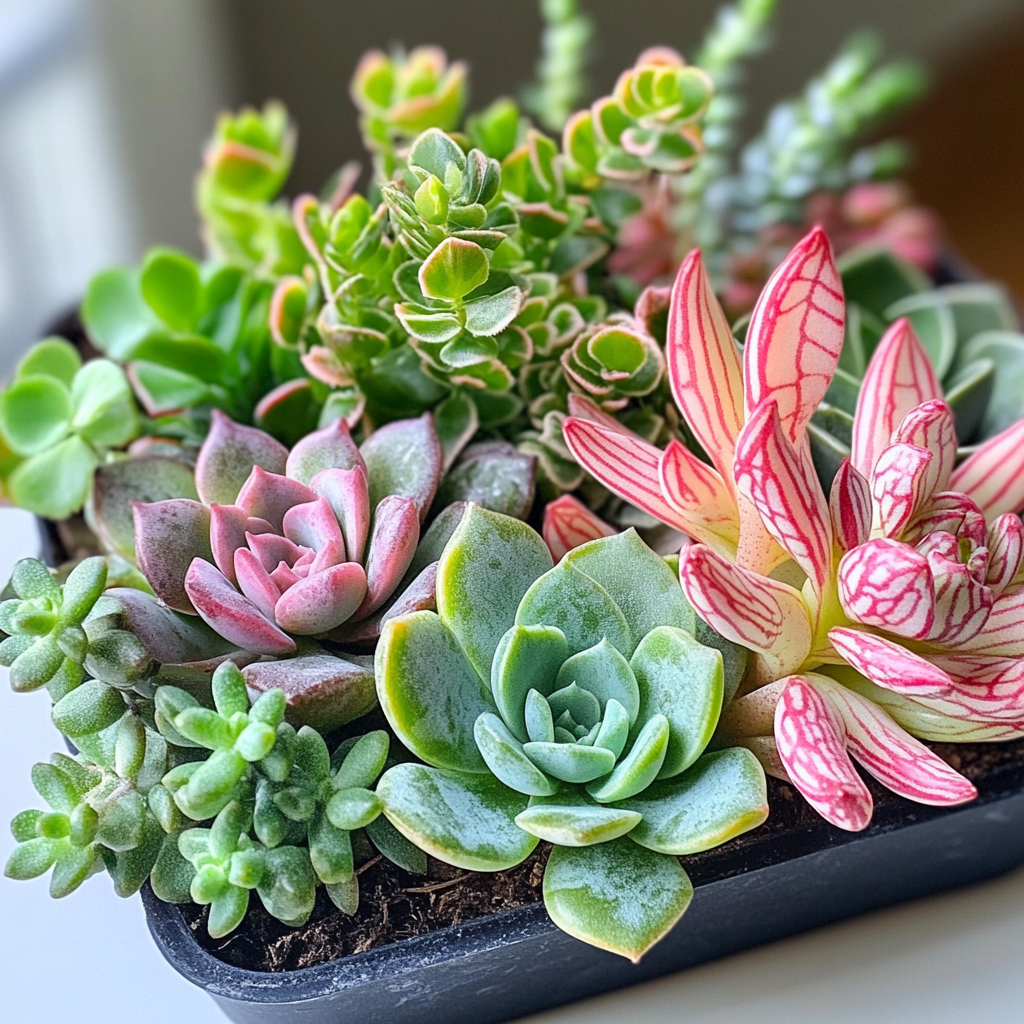
Popular Succulent Varieties for Indoor Gardens
To get your indoor succulent garden going, below are popular kinds that are attractive yet easy to care for:
Echeveria
The genus Echeveria is highly acclaimed for its rather striking rosette shape and pastel shades of color. They do love nice, bright, indirect sunlight, and the soil should be sufficiently drained. Water them only when the soil has become totally dry so that root rot will not occur.
Haworthia
For low light, Haworthia is quite tolerant and thus for beginners. Its leaves are fleshy and show sometimes striking surface patterns to let it look more interesting. Allow the soil to dry out between waterings.
Aloe Vera
Besides adding to the aesthetic touch, aloe vera is also grown for its medicinal properties. The plant will thrive in bright, full sun and requires moderate watering. Aloe vera can also help purify indoor air, making it a very practical option to plant indoors.
Jade Plant
The jade plant has thick, rounded leaves and is said to bring good fortune and money. The plant will thrive under vibrant lights but needs little water. It is a stunning, bushy plant when cared for.
Zebra Plant
It has dark green leaves with a white stripe running across in their middle, resembling a zebra. It grows well in indirect sunlight and requires infrequent watering, hence being an interesting low-maintenance succulent.
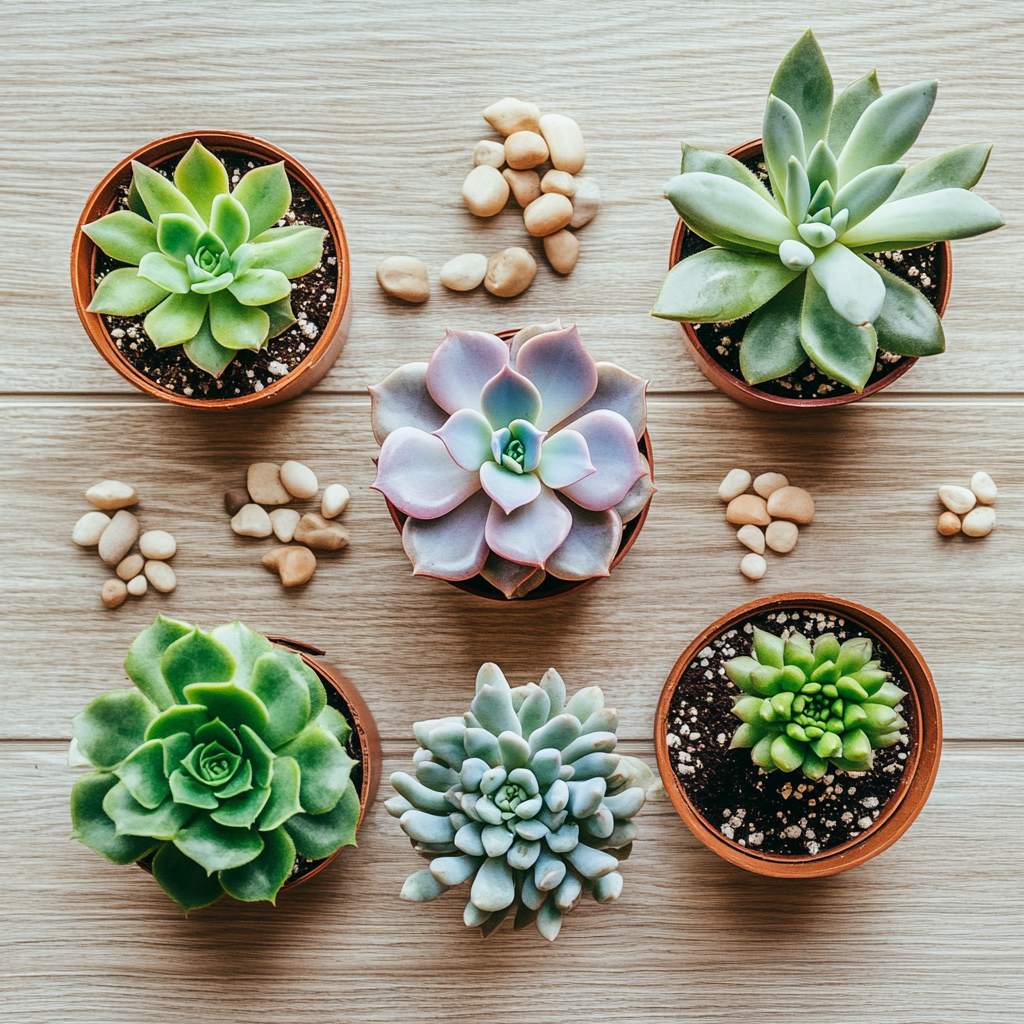
Building an Indoor Succulent Garden
Choosing the Right Containers and Soil
Choosing the right containers and soil is very crucial to making your indoor succulent garden blossom. Use pots with drainage holes so water will not stay in them; if it does, it will cause root rot. Clay pots are ideal because they provide excellent ventilation and absorb moisture.
Potting Mix
For the soil, use a commercially prepared, well-draining potting mix for succulents and cacti. The commercial mix usually contains sand or perlite for increasing drainage and facilitating good root development.

How to Design Succulents for an Aesthetically Pleasing Look
Group different species of succulents in one container, using varying heights and colors to add visual interest. You could plant them en masse with other interior plants or add textures like pebbles or driftwood for that extra touch of nature.
Placement for Maximum Sunlight
Most succulent plants require very bright indirect sunlight to develop well. Putting them near south-facing windows is quite good, but with very strong direct sunlight, one should be very careful as it may burn the leaves. If the natural light is poor, grow lights will help to deliver the light spectrum the plant requires.
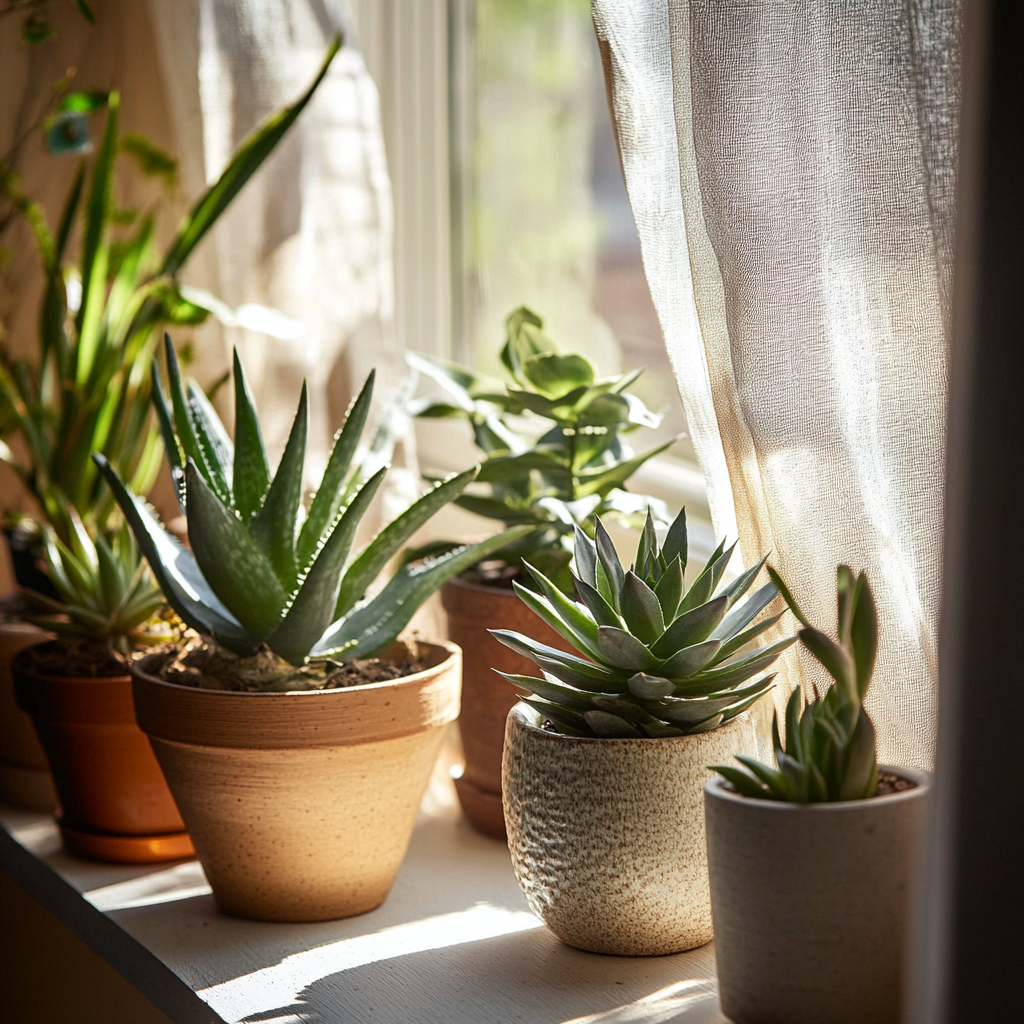
Care and Maintenance
Watering Guidelines
Succulents care most about one thing: proper watering. The amount of times people kill them by overwatering is immense because they want to dry out completely between waterings. A good rule of thumb: water them deeply but infrequently, generally every two weeks during the growing season and even less during the winter months.
Fertilizing Tips
Succulents do not really need much fertilization. However, if you want the plant to be more vibrant in color and to grow healthy, then application once a month is done during the growing season. Use a well-balanced but highly diluted fertilizer. Get a fertilizer that is specifically prepared for succulents so that overfertilizing might be avoided.
Pest Control and Common Problems
Watch for pest infestations such as mealybugs or aphids. Look at your plants regularly, and if necessary, use mild insecticidal soap. In addition, watch for signs of stress—yellow leaves or soft stems—are indications that plants are being overwatered or have root problems. Succulents are ideal for indoor gardening. They offer impressive arrays in color and shape and require low maintenance care. Choose the right types of plants, make them look aesthetically pleasing, and consider some care tips—you’re good to go, ready to turn your indoor space into a lush succulent haven.
